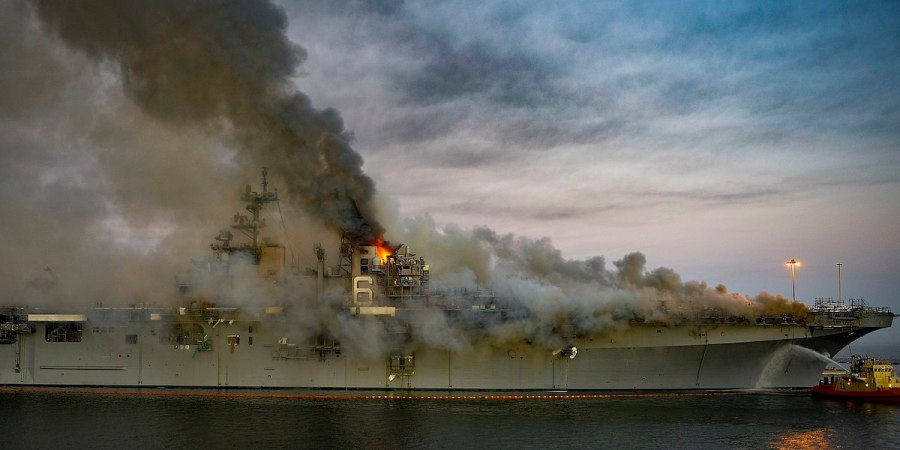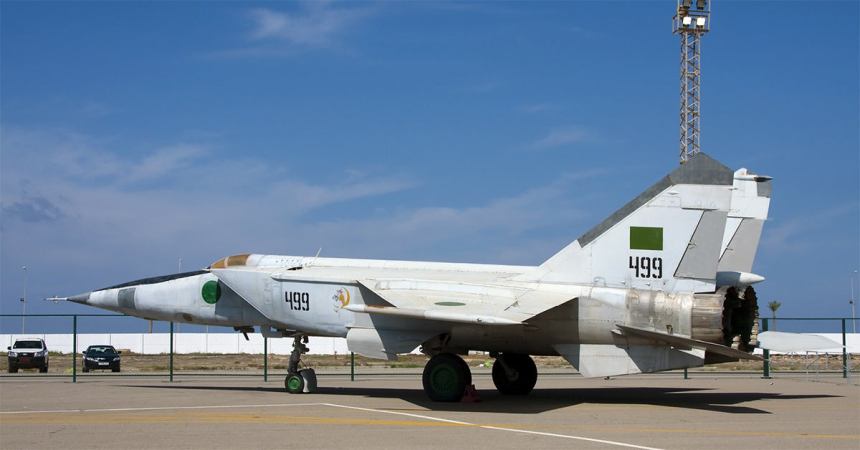Naval mine countermeasures have not gotten a lot of attention in the press, which is strange considering that the job is crucial. Of the last four US Navy ships damaged by hostile action, three were by mines — the other was an Oct. 2000 terrorist attack on the Arleigh Burke-class guided-missile destroyer USS Cole (DDG 67).
In 1988, the Oliver Hazard Perry-class guided missile frigate USS Samuel B. Roberts (FFG 58) suffered severe damage from an Iranian mine, which put the vessel out of action for over a year. During Operation Desert Storm, the Ticonderoga-class guided missile cruiser USS Princeton (CG 59) and the Iwo Jima-class amphibious assault ship USS Tripoli (LPH 10) were both damaged by mines.
So, what keeps today’s Navy safe from deadly mines?

USS Scout (MCM 8), an Avenger-class mine countermeasures ship, in Los Angeles for Fleet Week.
(U.S. Navy photo by Petty Officer 2nd Class Derek Harkins)
11 Avenger-class mine countermeasures ships
The Navy built 14 of these vessels, starting with USS Avenger (MCM 1), which was commissioned in 1987. Prior to that, the bulk of the Navy’s minesweeper force consisted primarily of World War II-era vessels. The other 13 Avenger-class vessels entered service within the following seven years. Eleven of these ships are still in service. USS Avenger and USS Defender (MCM 2) have been decommissioned, and one vessel, USS Guardian (MCM 5), ran aground and was a total loss.
These vessels have a top speed of 14 knots and a crew of 84 officers and enlisted. Their primary systems for mine warfare are remote operated vehicles that can descend hundreds of feet below the ocean to neutralize mines.

A MH-53 Sea Dragon lowers its mine-hunting sonar.
(US Navy photo by MCSN William Carlisle)
30 MH-53E Sea Dragon helicopters
The Navy operates 30 of these heavy-lift helicopters that were acquired in the 1980s. While they bear a superficial resemblance to the CH-53E Super Stallion, there are some big differences. Most notable is the fact that they have larger sponsons to hold more fuel. They can also carry additional fuel tanks in the cargo compartment.
The MH-53E has a maximum range of 885 miles and a top speed of 172 miles per hour. These helicopters tow a mine-sweeping sled and can operate from any aircraft carrier or amphibious assault ship. These helicopters are slated to retire in 2025.

A MH-60S Seahawk helicopter hovers while a technician drops down to handle a mine.
(U.S. Navy photo by MC3 Devin Wray)
256 MH-60S Seahawk multirole helicopters
This helicopter will assume the airborne mine-countermeasures role among the many other missions it carries out when the Sea Dragons retire. This versatile helicopter is responsible for vertical replenishment, combat search-and-rescue missions, anti-surface warfare, medical evacuation, and supporting special operations forces. They can operate from any carrier, amphibious vessel, or surface combatant.
This helicopter has a top speed of 180 knots and a maximum range of 245 nautical miles. While the 256 MH-60S helicopters purchased by the Navy offer a lot of versatility, the range and endurance are a significant step down from the Sea Dragon.

USS Coronado (LCS 4), an Independence-class littoral combat ship, is intended to help replace the Avenger mine countermeasures ships.
(U.S. Navy photo by MC2 Kaleb R. Staples)
12 Littoral Combat Ships
So far, the Navy has commissioned 12 littoral combat ships. These ships were primarily intended to replace the Oliver Hazard Perry-class frigates, but also being given double duty in also replacing the Avenger-class mine countermeasures vessels. Their mine-clearing capability is based on a mission package that is centered around the use of MH-60S helicopters and remote-operated vehicles.
The littoral combat ship has been controversial due to numerous breakdowns and a smattering of other issues, and the production run is being cut short in favor of new guided-missile frigates.


























